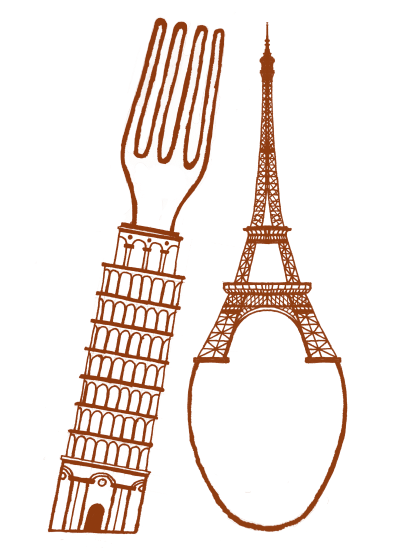
In certain parts of northern France, the Christmas season starts with St Nicolas' feast on the 6th of December. In these French regions, St. Nicolas replaces Father Christmas and it is him that delivers all sorts of gifts to the kids. In other parts of France, a more well-known tradition is observed; Father Christmas fills the kids' stockings and brings gifts on the night between the 24th and the 25th of December. Adults, in France exchange gifts on the 1st of January.
After midnight mass on the 24th of December, people meet at their homes or in restaurants to celebrate with a meal called 'Le réveillon'. Different parts of the country celebrate with different dishes. Some of the most popular ones are the 'dinde' - turkey and chestnuts in Bourgogne, 'oie' - goose in the north-east of France, 'huîtres et champagne' - oysters and champagne in Paris. Other dishes eaten are chicken, ham, salads, etc.
In most homes, there is a mistletoe over the door, which is supposed to bring happiness all year round. Nativity cribs and Christmas hymns are also very popular in France.
The last day of celebrations is the 6th of January, where in France we celebrate the feast of Kings. This day reminds us of when the three Kings arrived in Bethlehem to give their gifts; gold, incense and myrrh to baby Jesus. On this day, families reunite and give gifts to the poor.
One popular Provencal tradition for Christmas Eve after having 'le réveillon', is called 'les treize desserts de Noël'. In each home, a display of 13 different desserts is presented and will stay on display for guests and family members to enjoy during the following three days. The 13 desserts represent Jesus Christ and the 12 Apostles and stay on a table from the 24th of December after midnight mass and 'le gros souper' or 'le réveillon' till the 27thof December.
The table is decorated with 3 lit candles, symbolising the Trinity. The typical main desserts are:
Nuts (such as walnuts, hazelnuts, almonds and pistachios). The different types of nuts represent a different order.
- Hazelnuts and walnuts represent the Augustinians order,
- almonds represent the Carmelites,
- dried figs the Franciscans and finally
- raisins symbolise the Dominicans order.


Oranges, clementines and mandarins
Citrus fruits, especially oranges symbolise the wealth in the coming year, as well as being a traditional Christmas gift.
Nougats
There are two kinds presented on the table:
- the light (nougat blanc)
- the dark (nougat noir)
These symbolise the good and the evil and representing the penitents (people that seek forgiveness for their sins).
Next is the Mendiants
These chocolate disks are topped with dried fruits and nuts. You can find the recipe for these delicious chocolate-based disks here.
Some of the nuts below represent also the Apostles. Apart from dried figs and raisins, it's also important to have ingredients such as candied fruit (oranges and cherries), which also represent the Apostles.
Dates represent the three Kings coming from the Orient.



Other desserts that are more typical for this time of year are:
Pâte de coing
Quince cheese is a sweet, thick jelly made of the pulp of the quince fruit, which in shape looks like a cross between a pear and an apple. This sweet is very common in several countries.
Calissons d'Aix-en-Provence
A traditional French marzipan-like sweet consisting of a smooth, pale yellow paste of candied fruit, usually melons and oranges and ground almonds topped with a thin layer of icing.
Pompe à l'huile
This is a cross between a flat cake and a bread similar to fougasse made with flour, olive oil, sugar and orange blossom water.
Melon
Fortified wine
A wine with an addition of a distilled spirit, most of the time brandy. The fortified wine represents Jesus himself.

Bûche de Noël is also most of the time added to the table. The bûche is a traditional Christmas dessert made of a sponge cake usually a genoise. This is then covered with a chocolate buttercream and rolled in a roulade.
The traditional decoration is covering the outside of the roulade with the rest of the chocolate buttercream. Then, to make it resemble an actual chopped off log, using a fork or a knife, drag through the chocolate to make it look like bark. Then, finish the decorations off by dusting icing sugar on top.
You can find the recipe step by step for this tasty Bûche de Noël (Yule log) here.
These are only some of the most common desserts presented in some French homes during this festive time of year. There are also other options you could put on your tables as long as you have something from the three main categories; dried fruit and nuts, fresh fruit and finally sweet.
Finally, I want to take this opportunity to wish you all a Merry Christmas full of love, happiness and lots of food!! See you again next week with another tasty recipe! x

